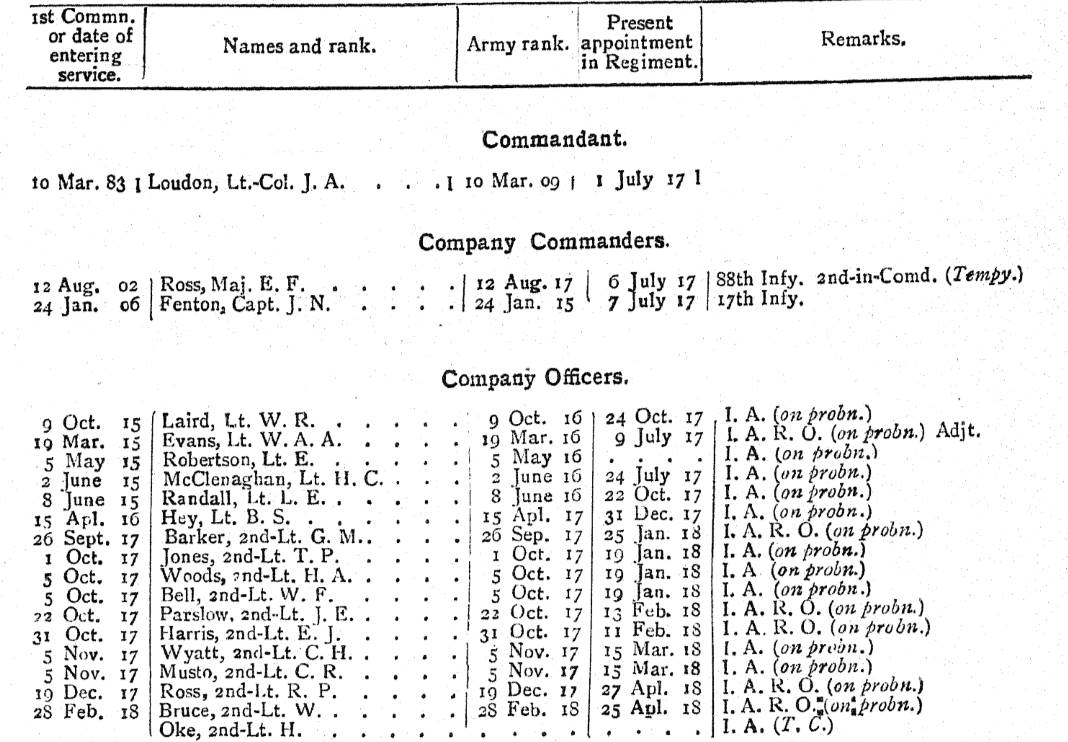This article is about the short-lived 2nd Battalion 43rd Erinpura Regiment and will help you to research the Battalion and those who served with it during the First World War. I have written a separate article on the 1st Battalion 43rd Erinpura Regiment and a series of guides to help you research soldiers who served in the Indian Army during the war:
The 2nd Battalion 43rd Erinpura Regiment in the First World War
Lineage: The 2nd Battalion 43rd Erinpura Regiment was formed at Ahmedabad on 23 June 1917 and disbanded on the 20 July 1920. For a history of the Regiment’s lineage see my page on the 1st Battalion 43rd Erinpura Regiment.
Class Composition of Battalion in 1919: 2 Companies of Rajputana Hindus and Muslims and 2 Companies Gaur Brahmans.
The 2nd Battalion 43rd Erinpura Regiment was a short-lived, war-raised Indian infantry battalion formed at Ahmedabad in the present day state of Gujarat on 23 June 1917. By October 1917, the Battalion had moved to Baroda. Initially, the Battalion was commanded by Lieutenant-Colonel John Archer Loudon, and its British officers were chiefly drawn from the Indian Army Reserve of Officers (I.A.R.O.) or Indian Army officers on probation. On 18 April 1919, Lieutenant-Colonel Reginald Edmonstone Cheyne (son-in-law of the writer Sir Henry Rider Haggard) was appointed to the Battalion and commanded it until its disbandment. The Battalion served with Southern Command during its short existence. The extract below was taken from the July 1918 Indian Army List and recorded the British officers serving with the Battalion.
By December 1918 the Battalion had moved to Santa Cruz, Bombay now Mumbai where it was still stationed in August 1919. At some point between January and July 1919, the Battalion sent a detachment to Deolali, 170 miles northeast of Bombay. The confidential report for the Battalion below was written by Major-General Wyndham Charles Knight, Commanding Bombay Brigade in early 1919. No date was recorded but most reports were written around February.
Drill, Manoeuvres and Marching – Has been handicapped by large numbers required for duties in Bombay, and the unit is not yet up to the standard in marching.
Musketry and Signalling: Satisfactory.
Equipment, etc.: Satisfactory except the mess tins which are too small and not strong enough.
Physical appearance: Fair.
Physical training: Very satisfactory.
Bayonet training. Satisfactory.
Discipline: Fair, a large percentage of the court martials were for desertions.
Health: Under the circumstances satisfactory.
Hospital arrangements: Very satisfactory.
Officers mess: Well kept and economically run for Rs. 2-11 per diem.
Books: Not well kept.
Lieutenant-General Charles Alexander Anderson made the following comment in the report which was dated 5 May 1919:
I inspected a wing of this regiment at Santa Cruz on 14th February 1919. In spite of the difficulties as to training experienced owing to the large number of men employed on guards, etc., in Bombay the training of the regiment in elementary matters is making fairly good progress and showed distinctly marked improvement though the unit is still a backward one. There was a serious case of indiscipline at Baroda on the 18th August. A fracas between 2-43rd and 111th Mahars.
Confidential review reports on Indian Army units, depots, British officers, etc for 1918-1919 IOR/L/MIL/7/17030:
The Battalion’s confidential report for 1919-1920 was also poor. By March 1920, the Battalion was stationed at Ajmere. On 20 July 1920, the 2nd Battalion 43rd Erinpura Regiment was disbanded.
War Diaries of the 2nd Battalion 43rd Erinpura Regiment
A war diary was written by a British officer of a unit and recorded its location and activities. Unfortunately, there are no war diaries for the 2nd Battalion 43rd Erinpura Regiment.
Further Sources for the 2nd Battalion 43rd Erinpura Regiment
Information regarding British and Indian officers who served with the Battalion can be found in the Indian Army List. There are two confidential reports for the Battalion held at the British Library. These also contain short reports on the British officers serving with the unit.
- Confidential review reports on Indian Army units, depots, British officers, etc for 1918-1919 IOR/L/MIL/7/17030.
- Confidential review reports on Indian Army units, depots, British officers, etc for 1919-1920 IOR/L/MIL/7/17031.

